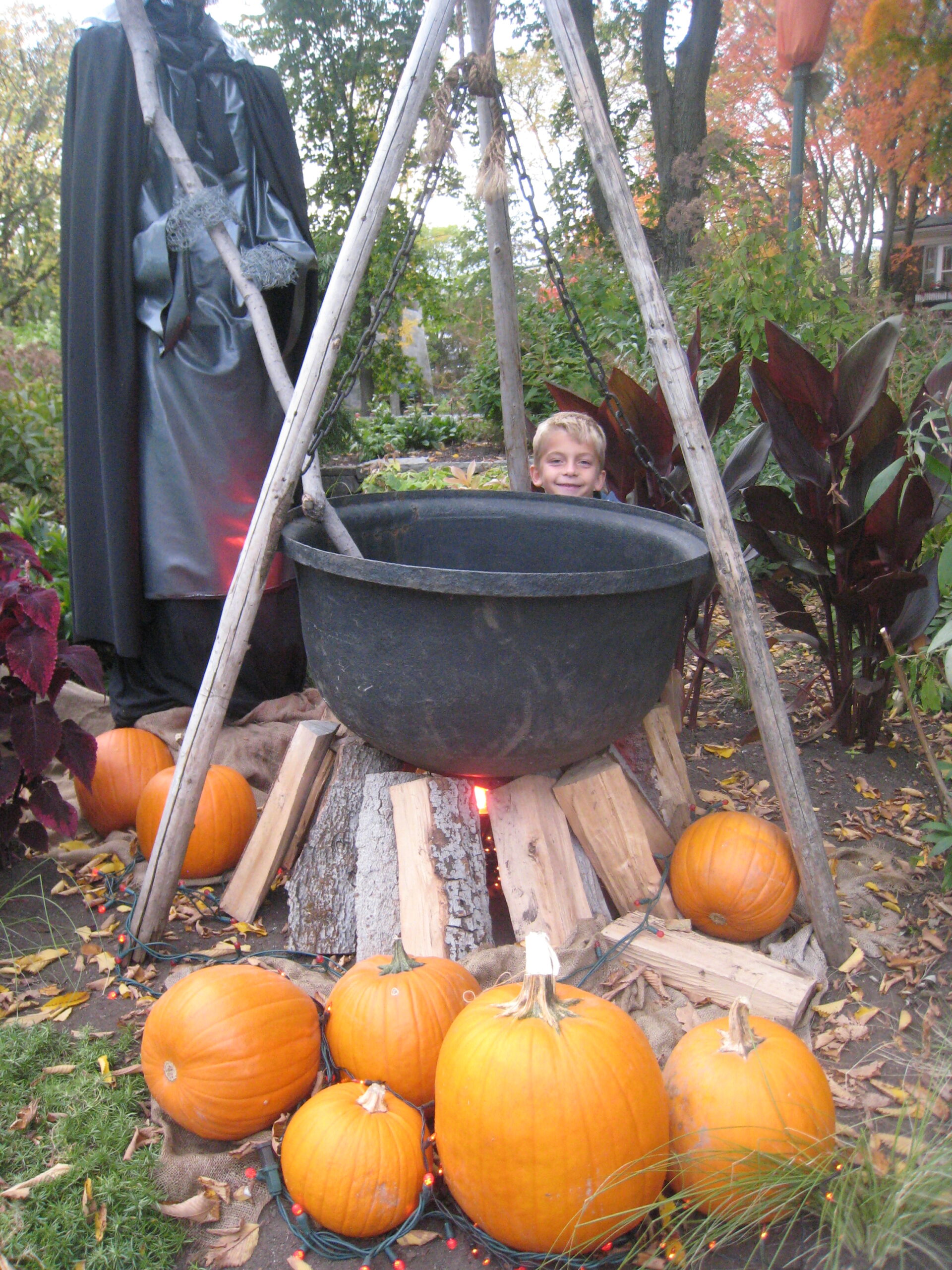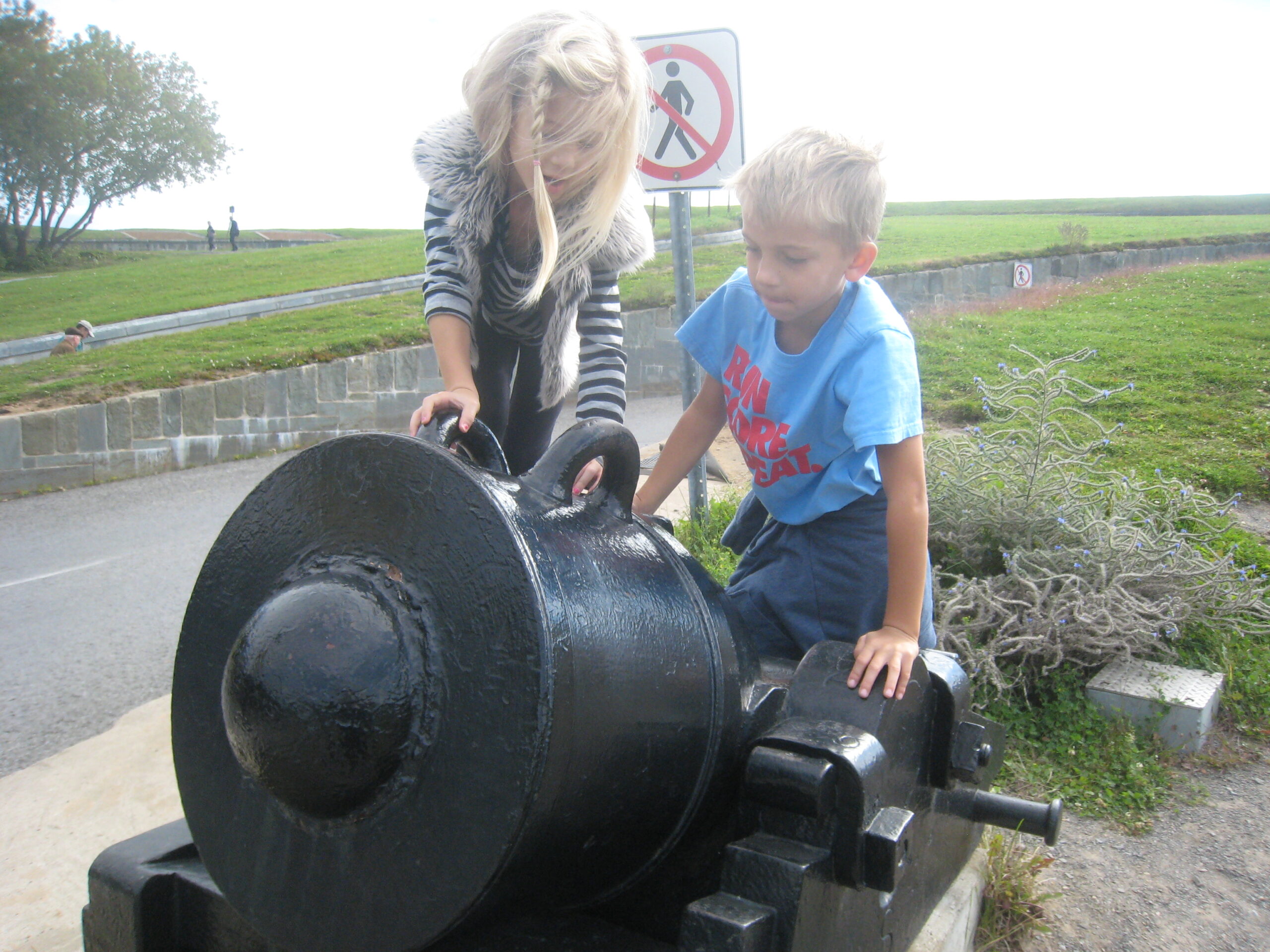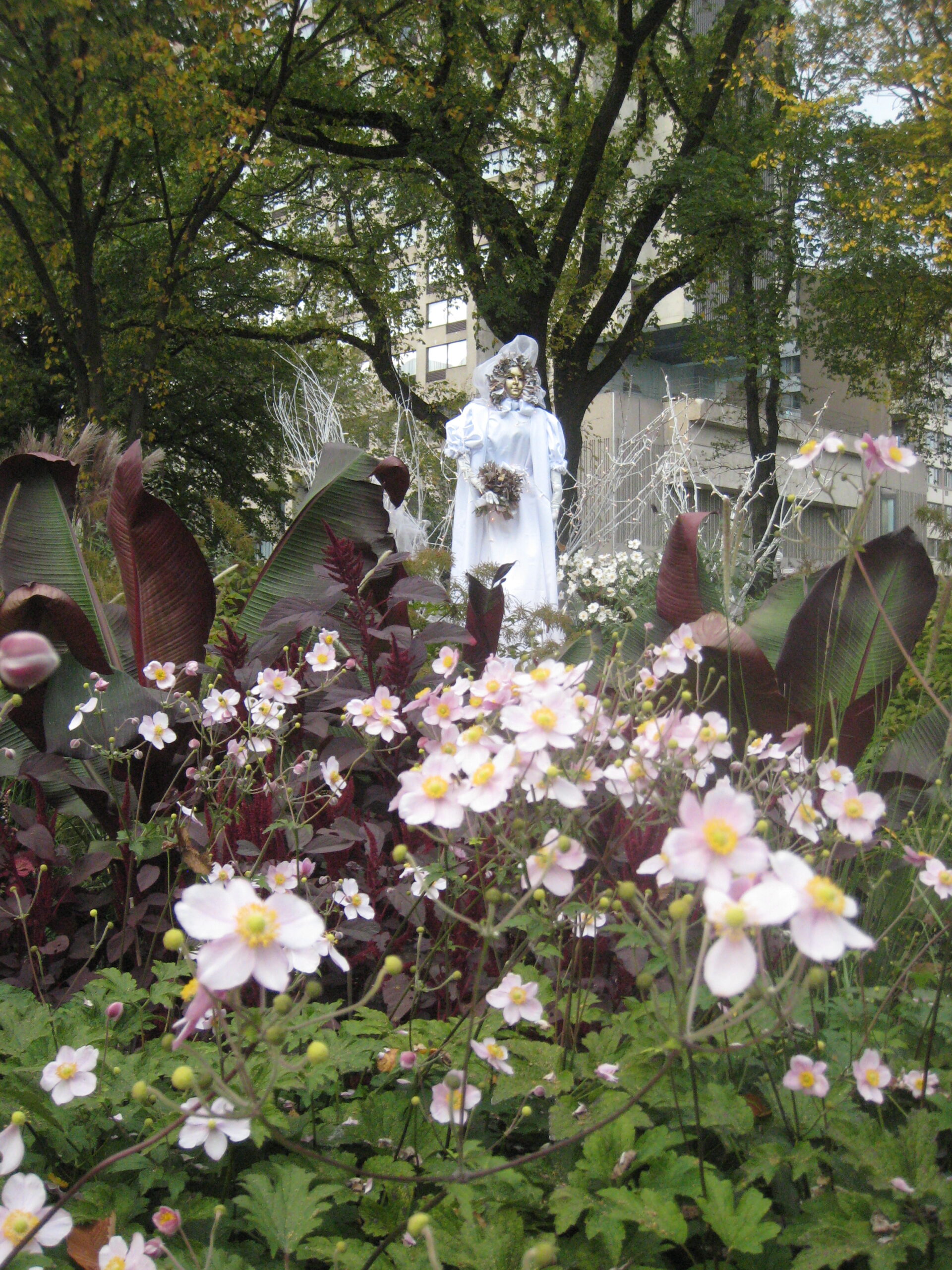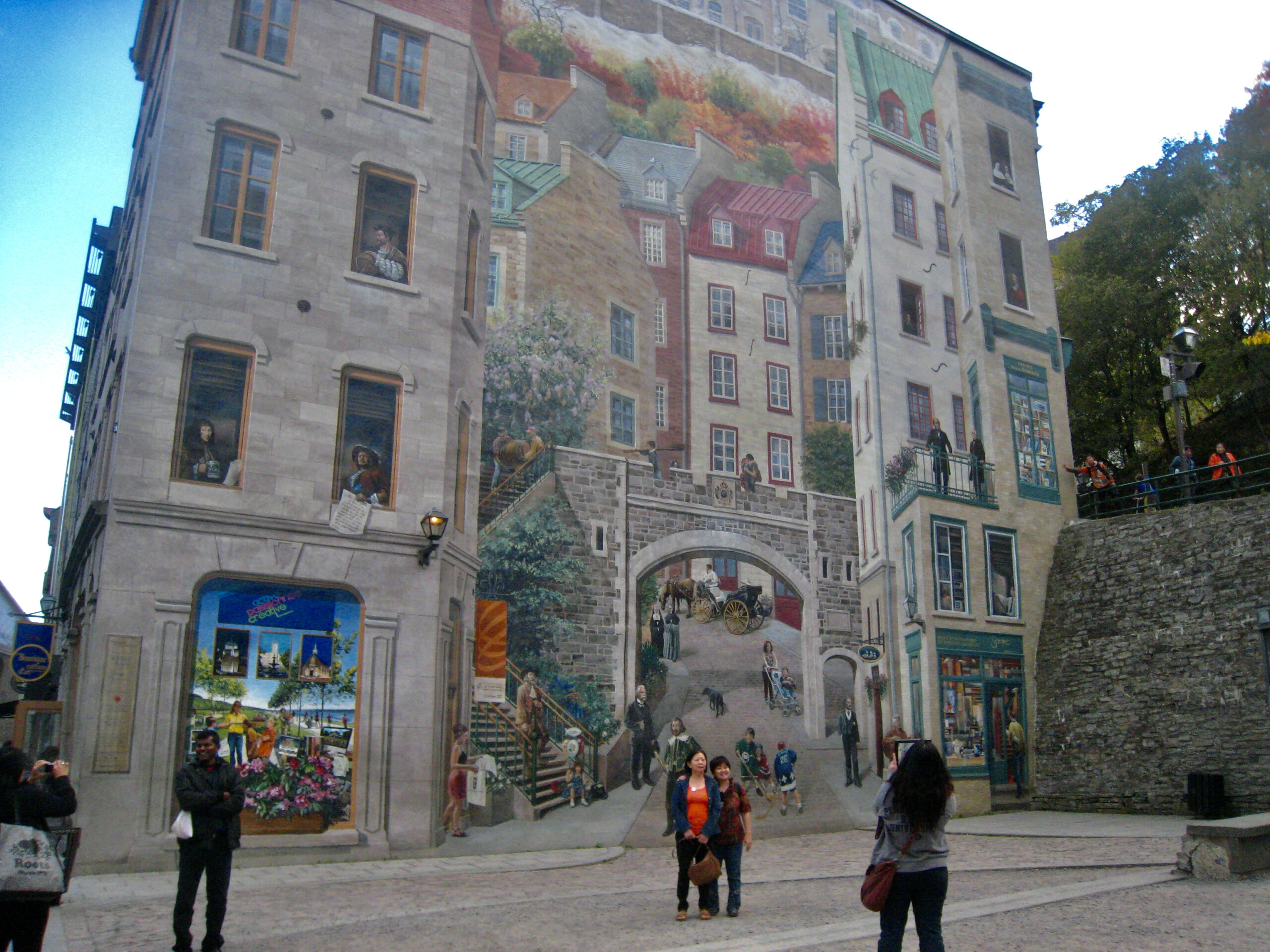A sailing ship has run aground in front of Québec City Hall and a humongous spider crawls on the side of a nearby office building. In any season, the capital of la belle province shows off its historic landmarks, but in the Fall, Québec revives its past with a Halloween twist.
Ships have a lot to do with the history of the city built on a promontory of the St. Lawrence River. Perhaps that’s why our tour guide says the unusual Halloween ship is Samuel de Champlain’s as if it is. “He founded the city in 1608, and because he came by ship, we like ships here!” His enthusiasm reminds me that I do too: our family is about to get on a cruise ship in Québec City.
Halloween or not, strolling the city begins with an orderly visit to the ‘beautiful house’—Fairmont Le Château Frontenac—but once we get on the Citadel built on Cape Diamond, our grandchildren run free, straddling canons, conquering tunnels, and leading a charge up the steps and mounds of the grounds. Fake skulls and other mortuary decors put them in an unrestrained treat or trick state of mind until a gentle carriage horse brings them to a standstill.
At any time in Québec City, a must-see destination is the Plains of Abraham—by the name of the former landowner—in Battlefields Park. What’s more, in October, one of the notable gardens turns into a Halloween venue.
Joan of Arc in Spirit
Perhaps the Halloween spirits are getting to me, but the sunken garden seemed to be the result of having caved in under the might of the female equestrian warrior. I wonder why Joan of Arc is remembered in Québec where she has nothing to do with its history. I can’t think of any connection between Halloween–a pagan festival–and the divine voices she said she heard. But Halloween is anyone’s game.
As it turns out, according to the interpretive plaque affixed to the monument pedestal, a Francophile American couple commissioned it to sculptor Anna Hyatt Huntington and gifted it to the city, in 1930, as “a tribute to the patriotism and courage of the heroes of 1759-1760.”
I step down to the rectangular garden, in a French formal design combined with English-style flowerbeds and, as indicated, some 150 perennial and annual plants. Pumpkins brighten the ‘haunted’ grounds that seem to have put a happy spell on the children, with family in tow.
Halloween Tales of Historic Truth
I am staring at a fake convict staring back behind the bars of his fake cell door. Fortunately, times have changed, and it’s not eight o’clock sharp, or we might have joined onlookers for his execution, his body dropping into a coffin below. Today, the former prison of the Plains of Abraham houses the soul-filling Québec City Fine Arts Museum. But some say there are ghostly noises and shaky objects in there, even when it’s not Halloween.
The children walk on The Widow’s Walk. They are unimpressed by the ghost dressed in black, but I am intrigued. The Widow’s Walk is the name of a platform built between the roofs of the townhouses of the past. Was it a viewpoint for hopeful widows waiting for their seafarer husbands? A place where single women could enjoy the fresh air at night other than on the undignified streets? Or the access to throw sand into a chimney on fire? The interpretive boards by each such display leave it as a guessing game.
Another trickster is the bewitching White Lady of Cape Diamond as she blends with the white anemones around her. She is a reminder of hopeful prospectors, those deceived by the sparkling stones that turned out to be rock crystals and not diamonds.
Next, a witch cooks a mysterious potion for the next Sabbath, a common witchcraft practice in medieval times. Tombstones reveal the names of doomed Québécois, Halloween ignoring the reprieved ones. Meanwhile, phantoms dangle from elm trees while the children jump around the fake graves, sit on a seemingly unearthed coffin, and smile at a grinning skull. Halloween is said to come alive when the torches of guided tours glare in the darkness of the night.
The History of Québec
Halloween has somehow distracted me from the historic essence of Québec, but I can’t leave the city without brushing on a bit of history. At the Battle of the Plains of Abraham, in 1759, James Wolfe’s well-trained infantry defeated the Marquis de Montcalm’s untrained militia, yet both leaders were killed. The English had won the battle on that ghastly day, but not the heart of the Québécois. Their resistance to integration is still evident today. At street intersections, vehicles stop at the arrêt signs. Even France isn’t as French.
The colonial fortifications of Old Québec—A UNESCO Heritage Site—are the only ramparts left in North America. I ponder 400 years of history as I look at the stone-built church of Notre-Dame-Des-Victoires and observe the whimsical elements of the mural at Place Royale. Above all, I enjoy the vibrant culture, fashion flair, traditional cuisine, and friendly demeanor of the Québécois, as well as their Halloween way of celebrating history. Every year has its own theme.
Original article published BucketTriper 2013 – revised 2022






